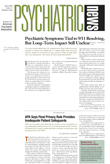Funding is needed to establish and support a network of suicide research “population laboratories” that would entail study samples of 100,000 people, according to an Institute of Medicine (IOM) report released in June. The idea is to enhance knowledge about suicide with more reliable and descriptive data that only large and culturally diverse samples can yield.
The report, titled “Reducing Suicide: A National Imperative,” presents a meta-analysis on a wealth of existing data on suicide and explores prevalence rates, cross-cultural influences, mental illness, and risk factors for suicide. It also places suicide in a historical context by providing examples of suicide notes and instances of suicide from China, in 295 B.C., for instance, and 18th-century France.
In the wake of former U.S. Surgeon General David Satcher’s 1999 report titled “The Surgeon General’s Call to Action to Prevent Suicide,” several federal mental health agencies asked the IOM to conduct research on aspects of suicide that included etiology, risk and protective factors, and gaps in knowledge about suicide, for example.
These agencies, which included the National Institute of Mental Health (NIMH), National Institute on Drug Abuse, National Institute on Alcohol Abuse and Alcoholism, Centers for Disease Control and Prevention, Veterans Administration, and Substance Abuse and Mental Health Services Administration, also asked the IOM to develop strategies for research on suicide and prevention.
The IOM formed the Committee on Pathophysiology and Prevention of Adolescent and Adult Suicide and began an 18-month literature review and analysis. Its final report was distributed to federal agencies, mental health policymakers, and several congressional committees.
“Suicide is a long-term problem, and we are searching for a long-term solution,” Arthur Kleinman, M.D., told Psychiatric News. Kleinman, co-chair of the Committee on Pathophysiology and Prevention of Adolescent and Adult Suicide, noted that suicide is a problem with many contributing factors, including biological, genetic, social, cultural, and political ones. “What we don’t know is the golden thread that links these factors together.”
Kleinman and other committee members looked at suicide outcomes across different ethnic groups in the United States and noted important differences. “We asked some tough questions, like, How, with the social and economic burdens African-American women bear, do they have such low suicide rates?,” Kleinman said. Just 2 in 100,000 black women commit suicide each year. These rates are in stark contrast to those of elderly white men, who are considered a high risk for suicide—37 out of 100,000 white men over the age of 65 commit suicide annually.
Psychiatrist and committee member Carl Bell, M.D., said that more research on low suicide rates in certain ethnic groups such as black women will ultimately guide suicide prevention strategies in the future. Bell, who conducted the bulk of the cross-cultural analysis for the group, said that between 1994 and 1997, rates of suicide in black males had reached an all-time high, but that these rates were on their way back down. “Of course, we’d like to see these rates drop further,” he added.
American-Indian males are also at high risk for suicide. In adolescence and early adulthood, members of this group commit suicide at 2.5 times the rate of the general U.S. population, or 67 per 100,000 people.
The report also discusses other groups that are at high risk of suicide, including jail or prison inmates and people who have been sexually abused as children. Dentists, according to the report, have more than five times the national average rate of suicide.
Although suicide is a substantial public health problem, the rates within the general public are fairly low. With base rates of 10 to 12 suicides per 100,000 people, large numbers of people would need to be studied to gather valid data on the many aspects of suicide.
The IOM report recommends that NIMH—along with other federal mental health agencies—develop and support five to 10 “population laboratories” consisting of at least 100,000 people each. The laboratories should include an ethnically and socially diverse and representative population.
National monitoring and reporting of suicide also need to be improved. “Few coroners are trained to recognize whether someone has committed suicide,” said Kleinman. “Not only must we train coroners, but we must also standardize data collection on suicide in order to have a better surveillance system.”
Some of the questions that might be answered by large population studies are the types and aspects of psychotherapy that have been effective in reducing suicide and the relationship between genetic markers and suicidal behavior, for instance.
The report also recommends training primary care professionals to recognize and treat suicide-risk symptoms. According to the report, 70 percent or more of elderly suicide victims were seen by their primary care doctors within a month of their deaths.
Kleinman is anxious to overcome one of the primary barriers to reducing suicide prevalence, which is a lack of awareness of the problem. “Most people are surprised that suicide is more common than homicide—that is a sign that we have done a poor job thus far in raising awareness.”
The IOM report, “Reducing Suicide: A National Imperative,” can be purchased at the National Academy Press Web site at www.nap.edu/catalog/10398.html. ▪
